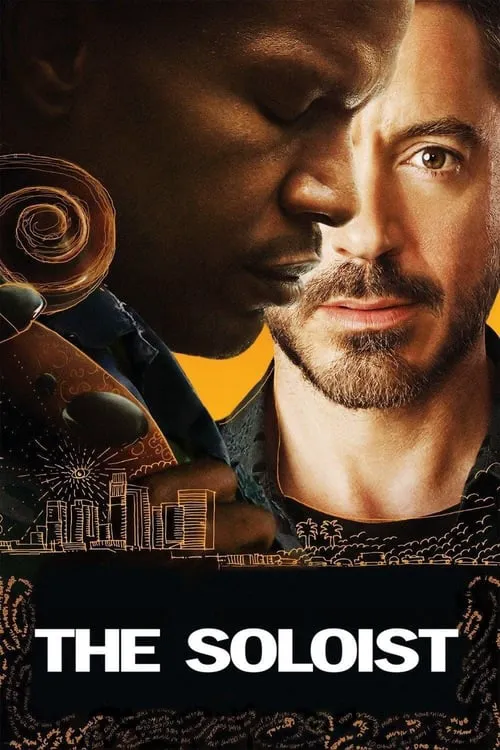The Soloist

Plot
In the City of Angels, where glamour and homelessness coexist, Steve Lopez, a driven journalist at the Los Angeles Times, finds himself at a crossroads. Having won a Pulitzer Prize for his exposé on the foster care system, Lopez yearns for a fresh story that will propel him to the next level of his professional career. His editor, Kent Brown, presents him with a laundry list of possible subjects, but Lopez knows that to make a lasting impact, he must dig deeper. This is when Naweep Jucknut, also known as Nathaniel Ayers, enters Lopez's world. The 34-year-old Ayers, a former student at the prestigious Juilliard School of Music, has been struggling to cope with paranoid schizophrenia. A highly skilled cellist, Ayers's musical talents were evident in his early days as a student. However, the pressures of maintaining a rigorous academic schedule and dealing with his mental health issues led to a downward spiral. Now, Ayers finds himself homeless on the streets of Los Angeles. Despite his circumstances, his love for music remains unwavering, and he still holds onto his passion. One day, while rummaging through a Los Angeles Times dumpster, Lopez stumbles upon a beautiful cello-playing Ayers, performing on the street corner. Intrigued by the talented musician's plight, Lopez decides to intervene. Their initial encounter marks the beginning of a remarkable bond between the two men from different walks of life. Lopez, who has always been driven by his journalistic pursuits, finds himself torn between his commitment to his work and his growing empathy for his new acquaintance. As they start to spend more time together, Lopez learns about Ayers's extraordinary background, and his determination to help the homeless cellist grows. However, their relationship is not without its challenges. The stigma associated with homelessness and mental illness makes it difficult for people to accept and empathize with Ayers's situation. Lopez, too, struggles with the moral implications of turning Ayers's story into a sensationalized article, which could potentially ruin the musician's life. Throughout the narrative, the film's central theme becomes increasingly evident: the transformative power of music. For Ayers, music serves as a conduit for self-expression and a means of coping with his mental demons. It is through playing the cello that he momentarily escapes the harsh realities of his situation, allowing him to momentarily find solace. Lopez, too, discovers the healing properties of music. As he spends more time with Ayers, he begins to reevaluate his own priorities and values. He starts to see that there is more to a person than their circumstances, and that everyone deserves dignity and respect, regardless of their background. The bond between the two men deepens, and Lopez becomes more involved in Ayers's life, helping him secure temporary housing and medical treatment. Their friendship also raises questions about the role of journalism in shaping society. Is it ever acceptable to expose the vulnerabilities of others for the sake of a story? Lopez grapples with this dilemma as he weighs the pros and cons of publishing Ayers's story. He ultimately decides to pursue a more nuanced and thought-provoking article, one that highlights the complexities of homelessness and mental illness, while also celebrating the resilience of the human spirit. Through the cinematic lens, screenwriter Susannah Grant, who drew heavily from Steve Lopez's own memoir, brings to life a poignant and deeply moving story. Director Joe Wright, in his nuanced and empathetic approach, allows the audience to enter the world of the characters, and experience their struggles and triumphs alongside them. The chemistry between Robert Downey Jr. and Jamie Foxx is undeniable, and their performances breathe life into this extraordinary true story. Ultimately, The Soloist serves as a testament to the power of human connection and the enduring impact that one person can have on another. As the narrative unfolds, it becomes increasingly clear that the relationship between Lopez and Ayers will serve as a catalyst for positive change, not just in their individual lives, but also in the lives of those around them. The film concludes on a hopeful note, leaving the audience with a sense of awe and appreciation for the beauty and strength that can be found in the most unexpected places.
Reviews
Recommendations




